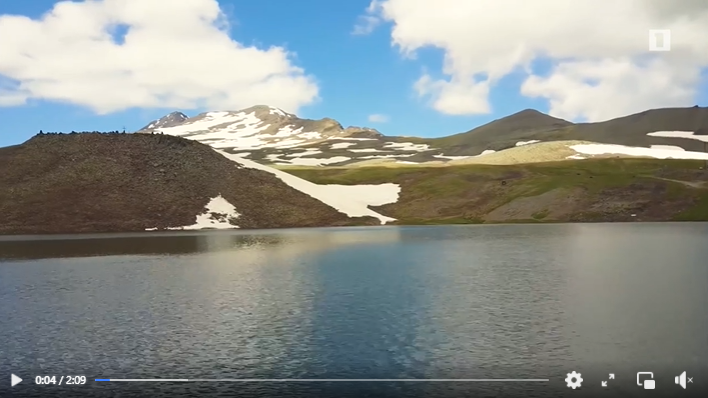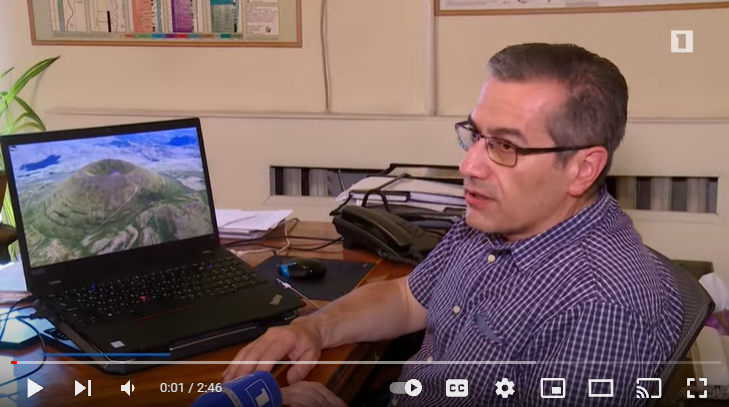|
Cycle 9 (2020 Deadline)
Assessment of geothermal energy resources and natural hazards in Armenia
PI: Khachatur Meliksetian (km@geology.am), Institute of Geological Sciences, Armenian National Academy of Sciences
U.S. Partner: Peter La Femina, The Pennsylvania State University
Project Dates: April 2021 - April 2024
Conference Circular: “Continental Collision Zone Volcanism and Associated Hazards,” Yerevan, September 2023
Project Overview Armenia is a landlocked country in the South Caucasus region, located between Iran, Georgia, Azerbaijan, and Turkey, with a population of about 3 million. Several active faults and potentially active and active volcanic systems exist in the country, and many earthquakes have been recorded. Past experience in Armenia shows that social stability and economic development are intimately tied to natural hazards; for example, the 1988 Spitak earthquake killed 25,000 people and led to economic collapse. The geology of Armenia is a potential source of hazards, but it also represents potential for geothermal energy and hydropower, an important resource given that much of Armenia’s current energy production is from imported fossil and nuclear fuels.
The research team of the Institute of Geological Sciences of the Armenian National Academy of Sciences in Yerevan (IGS ANAS) has experience in studying geology, volcanology, potential hazards, and geothermal energy in Armenia, but they lacked experience and knowledge in quantitative computational models of these processes and the study of geothermal systems linked with volcano-tectonic interactions. Overall, this PEER project was designed to provide a pathway to better tie years of geological research to hazard assessments and exploration of the geothermal energy potential of Armenia. The team sought to develop recommendations for the Government of the Republic of Armenia regarding further exploration and use of geothermal energy resources, as well as for local policymakers regarding natural hazards and volcano monitoring.
Final Summary of Project Activities
Over its three-year term, the project focused on assessing Armenia's geothermal energy potential, including the development of a voluminous project database integrating geological, geophysical, volcanological, tectonic, seismic, satellite, and geochemical data. The researchers collected satellite data from NASA and the European Space Agency—particularly infrared and gravity satellite data with focus on geothermal energy resources—for further analysis of geothermal anomalies.
The team’s field work included volcano-tectonic mapping, sampling for geochemistry and 40Ar-39Ar dating, CO2 surveys, and processing of seismic data aiming to develop ambient noise tomography in areas with potential for large scale geothermal power. They installed three new seismic stations in the Gegham volcanic ridge to study seismic swarms and geothermal activity of the area.
The team identified four new potential geothermal sites—Arpa-Sevan, Spitaksar, Hankavan, and Ashock—for further large-scale investigations that may lead to exploration drilling. They also developed policy recommendations in collaboration with government officials to guide Armenia's growth in renewable energy and built academic collaborations with universities in the United States and the United Kingdom, as well as local institutions like the American University of Armenia. The PEER team organized a webinar on geothermal energy potential in the South Caucasus and presented their project at two national conferences, one that they organized at the Institute of Geological Sciences of the Armenian National Academy of Sciences and the other convened by the Young Scientists Union of Armenia. In addition, they presented three papers at the 2023 General Assembly of the European Geosciences Union.
Publications
Gevorg Navasardyan, Ivan Savov, Edmond Grigoryan, Jean-Philippe Metaxian, Lilit Sargsyan, Elya Sahakyan, Avet Galstyan, and Khachatur Meliksetian. 2023. Nature of polygenetic to monogenetic transition of volcanism of Gegham volcanic ridge (Armenia). Abstract for the European Geosciences Union General Assembly 2023, EGU23-13580.
https://doi.org/10.5194/egusphere-egu23-13580
Khachatur Meliksetian, Gevorg Navasardyan, Lilit Sargsyan, Andrey Medvedev, Edmond Grigoryan, Peter LaFemina, Charles Connor, Vassily Lavrushin, Elya Sahakyan, Ivan Savov, and Natasha Toghramadjian. 2023. Assessment of geothermal energy resources and in Armenia. Abstract for the European Geosciences Union General Assembly 2023, EGU23-14495. https://doi.org/10.5194/egusphere-egu23-14495
Edmond Grigoryan, Khachatur Meliksetian, Hripsime Gevorgyan, Ivan Savov, Gevorg Navasardyan, Marina Bangoyan, and Tatevik Boyakhchyan. 2023. Tephrochronology and geochemical correlation of Middle Pleistocene distal tephra deposits in Armenia. Abstract for the European Geosciences Union General Assembly 2023, EGU23-15716.
https://doi.org/10.5194/egusphere-egu23-15716
Back to PEER Cycle 9 Grant Recipients
|
|
|
|





